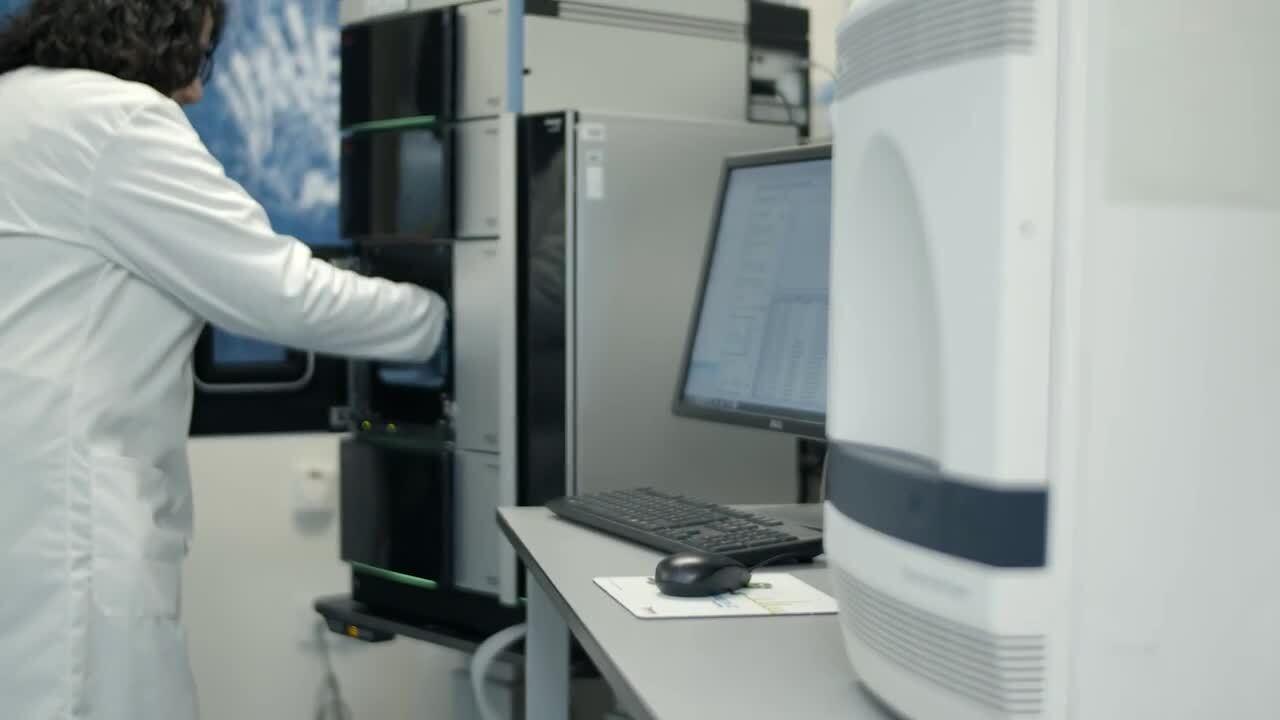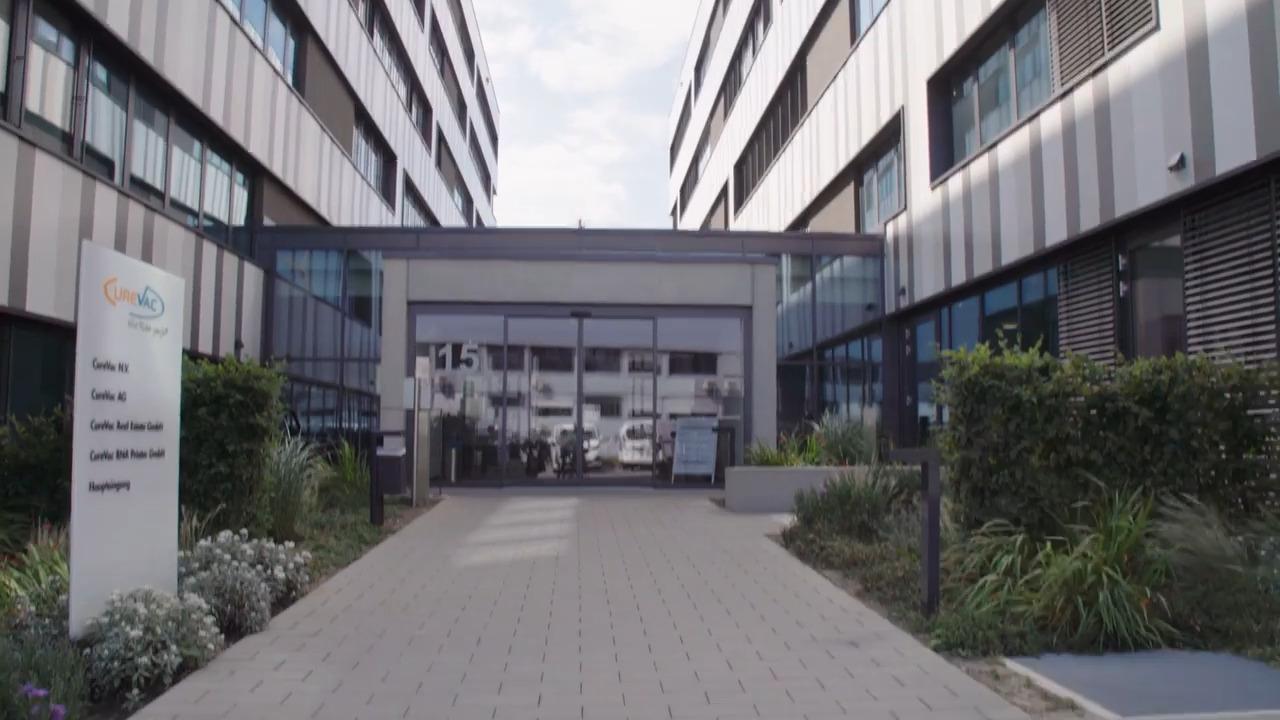
What are mRNA therapeutics?
Messenger RNA (mRNA) therapy enables the body to make the proteins we need to prevent, treat, or cure diseases. Unlike traditional biologics, mRNA therapeutics are large, delicate molecules that are produced using in vitro transcription (IVT) and need to be protected by lipid nanoparticles (LNPs) before they reach target cells.
What are lipid nanoparticles?
LNPs are a nanoparticle delivery system composed of lipid which encapsulate mRNAs, protecting them from degradation before the uptake by target cells or tissues.
Because mRNA is transient in the body, synthetic mRNA products require modifications to protect the product from natural degradation. To ensure safety and efficacy, regulatory agencies demand in-depth analytical characterization and criteria defined for purity/impurity monitoring (critical quality attributes or MAM 2.0 workflow). Impurities are identified during characterization, with acceptable levels defined, and monitored throughout manufacture and lot release.
Analytical characterization of mRNA therapeutics presents unique challenges that require new technologies and solutions.
mRNA characterization
Direct mRNA sequence confirmation
mRNA therapies are comprised of highly charged biological polymers. The unique, highly charged, linear chain with secondary folding poses difficult analytical challenges for sample preparation, chromatography, and mass spectrometry detection. Protein sequence verification by LC-MS is a routine test for therapeutic proteins, however, a direct sequencing method has only recently been developed for large oligonucleotides. Rapid DNA sequencing can be accomplished with new generation sequencers. mRNA, on the other hand, would first have to be converted to DNA with a reverse transcriptase, then the resulting DNA amplified before sequencing could be done. The conversion and amplification would lose any impurities and other information from the initial mRNA product. A workflow has been developed for direct sequence analysis of mRNA using UHPLC and HRAM-MS fragmentation. As the RNA is composed of only four different bases, a complete nuclease digestion produces short fragments that are not unique to any position in the long sequence. To overcome this, a reproducible partial RNase digestion using RNase T1 immobilized on magnetic beads can be used. The partial digest gives enough missed cleavages to produce larger unique sequence fragments that can be mapped to give high sequence coverage of the mRNA.
Impurity analysis
mRNA is produced by transcribing a plasmid DNA template via what is called in vitro transcription (IVT), mimicking the process that takes place in the cell (in vivo). For mRNA to be mature and functional in efficient translation in eukaryotic cells, it needs to be capped (7-methylguanylate cap at the 5’ end) and polyadenylated (poly-adenine(A) tail at the 3´ end). The cap and poly-A tail may be added enzymatically in a post-transcription step or co-transcriptionally (poly-A tail encoded to the DNA template). After synthesis, mRNA must be purified from the remaining reaction byproducts.
Purification is important because some impurities may trigger immune responses and decrease translation, affecting down-stream applications and efficacy. There are various methodologies and variables that can be optimized to perform the IVT. While some impurities will remain from the raw materials, others will be more dependent on the mRNA sequence. Among the most common impurities are nucleotides, enzymes, DNA templates and fragments, abortive transcript fragments, double stranded RNA (dsRNA), and primers. A sound method to evaluate mRNA purification is highly desired and important to ensure drug safety. Such a method should provide a reasonable separation and be sensitive to impurities with good mRNA peak shape. HPLC is beneficial for this purpose due to its high resolution, quantitative monitoring, rapid results, and small sample waste. Beyond quantifying the purity, HPLC can also perform advanced analysis to identify the impurities. Once the purity of mRNA is determined, and impurities characterized, they are then monitored throughout the process.
mRNA 5’ capping characterization
What is mRNA capping?
5’ Capping involves the alteration of nucleotides on the 5′ end of precursor messenger RNA. This process is highly regulated and essential to the creation of stable, mature messenger RNA that is able to undergo translation during protein synthesis.
Since the presence of a 5’ cap structure is essential for subsequent steps in the life cycle of mRNA in eukaryotic cells, capping efficiency must be determined and monitored throughout development.
mRNA 3’ poly(A) characterization
What is polyadenylation?
Polyadenylation is the addition of a poly(A) tail to an RNA transcript, such as messenger RNA. The poly(A) tail consists of multiple adenosine monophosphates.
For in vitro-produced mRNA, characterization of poly(A) tail length is a crucial part of transcript design. Determination of tail length assists in determination of translation efficiency, which has a direct impact on the efficacy of the therapeutic. Analytical measurements of the poly(A) tail have been mostly RNA-Seq-based, relying on reverse transcription followed by amplification. These experiments can be costly due to instrumentation requirements, sample workup, and data analysis. HRAM-LC-MS methods for determining the length of polyadenylated tails from in vitro-transcribed mRNA have recently been developed.
Lipid nanoparticle (LNP) characterization
LNP composition analysis by LC-CAD
Lipid nanoparticles (LNP) play a key role in mRNA-based vaccine and therapeutics delivery. LNPs encapsulate mRNAs, protecting them from degradation before uptake by target cells or tissues. The identification, ratio, and purity of the lipid components in LNP formulation are regarded as critical quality attributes (CQAs) for safety and efficacy, and thus must be accurately monitored.
Traditional UV detection can’t be used, as lipids have no chromophore. A charged aerosol detector (CAD) generates uniform signal response for any non- or semi-volatile compound, making it an ideal system for LNP compositional analysis. CAD also is more sensitive than alternative lipid detection systems, such as refractive index or evaporative light scattering detectors (ELSD).
LNP component analysis by LC-MS
An HPLC MS-MS/MS approach provides excellent analytical solutions for addressing the LNP lipid analytical needs by enabling confident identification of lipid components and associated metabolites using direct accurate mass measurement at both precursor ion and fragment ion levels. It also enables targeted lipid quantification with high sensitivity and selectivity using a targeted MS/MS approach.
For Research Use Only. Not for use in diagnostic procedures.

